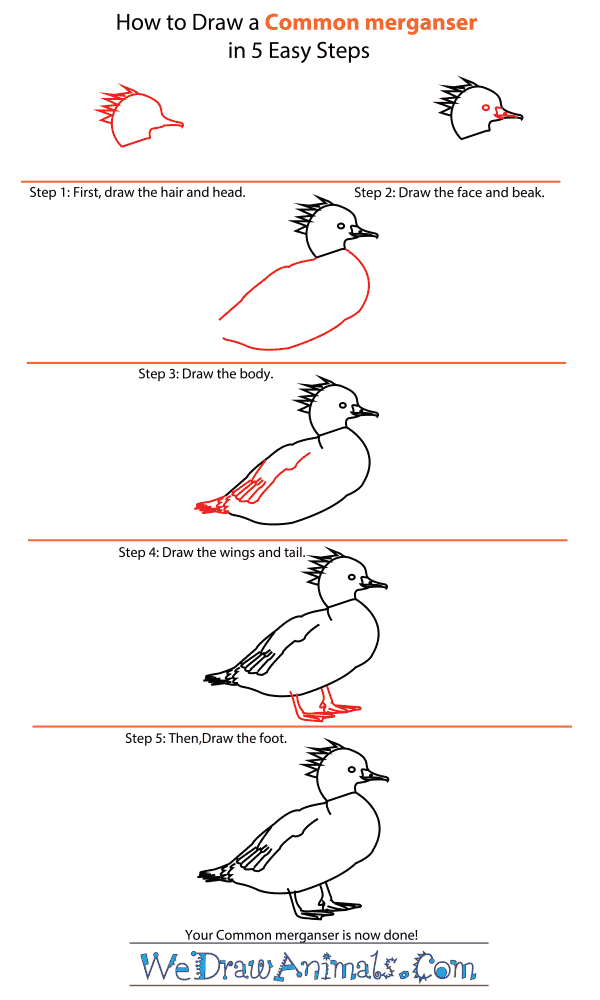In this quick tutorial you'll learn how to draw a Common Merganser in 5 easy steps - great for kids and novice artists.
The images above represent how your finished drawing is going to look and the steps involved.
Below are the individual steps - you can click on each one for a High Resolution printable PDF version.
At the bottom you can read some interesting facts about the Common Merganser.
Make sure you also check out any of the hundreds of drawing tutorials grouped by category.
How to Draw a Common Merganser - Step-by-Step Tutorial
Step 1: Let's draw a quarter circle for the merganser's head. Bring the lines out to a point for the beak. Give your duck some pointy hair!
Step 2: Let's draw an eye. Also draw a line on the beak to divide it in two.
Step 3: Next, draw the body. Leave a space open so we can add the tail.
Step 4: Now make the wing. It looks like the open palm of a hand! Also add a triangle to the end of your body to make the tail. Add some wavy lines to make feathers.
Step 5: Last, draw the feet. Ducks have webbed feet to help them swim. If you aren't sure how to do it, just draw toes and then add triangles in between the toes, with the narrow part of the triangle at the base of the foot, near the leg. You did it, your common merganser is done! If you'd like to color your picture, she has a brown head, orange beak, and a gray body.
Interesting Facts about the COMMON MERGANSER
The Common Merganser is a member of the bird family and the scientific term for them is Mergus merganser. Other popular names for this animal is the Goosander and Buff-breasted Merganser. These large ducks are found in North America, Europe, and Asia near forests of fresh water areas. This species makes their nest in the holes of trees and are part of a duck family that have saw bills.
Did you know?
- They can be over 2 feet in length.
- Their species come in 3 different types.
- There is a wingspan of more than 3 feet.
- This bird may access holes as small as 6 inches.
- The species may weigh almost 5 pounds.
- There are up to 17 eggs in their nest.
The serrated shape of their mouth helps them hold slippery food without it slipping. They eat fish, mollusks, crustaceans, worms, insects, amphibians, and rarely small mammals and other birds. They have a brown head, grey body, red beak, red feet, and longer feathers in the back of their neck. Younger members have black and white stripes between their beak and eyes. During mating season, males develop a black-green head and pink-white body.






